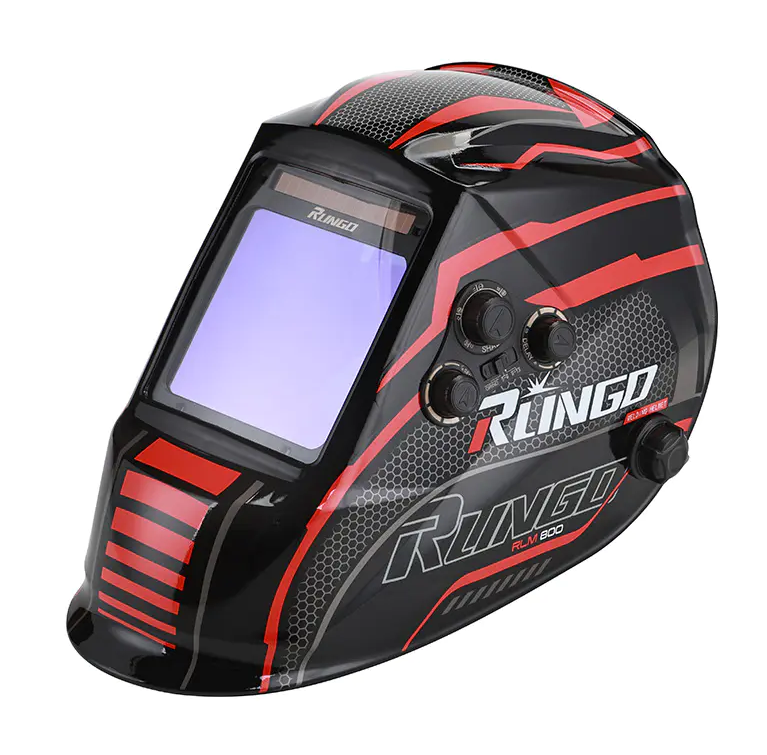The capability of an Auto Darkening Welding Helmet to automatically adjust its shade level based on different welding methods is a key feature that significantly enhances both safety and convenience for welders. Welding involves various processes such as MIG (Metal Inert Gas), TIG (Tungsten Inert Gas), Stick welding, and plasma cutting, each producing different intensities of light and heat. An Auto Darkening Welding Helmet is designed to detect these variations through built-in sensors and adjust the lens shade accordingly, ensuring optimal eye protection without compromising visibility.
When a welder initiates an arc, the helmet’s sensors quickly sense the increase in brightness and darken the lens to a preset shade level within milliseconds. This rapid response is crucial, as prolonged exposure to intense welding light can cause severe eye damage, including welder’s flash or photokeratitis. Traditional welding helmets require the welder to manually flip down a dark lens before starting, which can be cumbersome and less precise. In contrast, Auto Darkening Welding Helmets provide a seamless transition, allowing welders to maintain focus and positioning with minimal interruption.
The ability to automatically adjust brightness levels is particularly beneficial when welders work with different welding techniques or materials that demand various shade intensities. For example, TIG welding often requires a lighter shade for precision work, while Stick welding might need a much darker shade due to its brighter arc. A high-quality Auto Darkening Welding Helmet comes with adjustable settings that can be customized according to the welding method being used. Some helmets even feature memory functions to store preferred shade levels for different welding types, further improving efficiency.
Furthermore, this automatic adjustment feature enhances safety by reducing the risk of improper shading. Manual helmets may lead to welders accidentally using an incorrect shade, either too light or too dark, which can result in inadequate protection or poor visibility. Auto Darkening Welding Helmets minimize this risk by relying on advanced optical sensors and microprocessors that instantly react to changes in arc intensity, providing consistent and reliable protection across all welding styles.
Another important advantage of Auto Darkening Welding Helmets is their adaptability in various lighting conditions. Welding outdoors or in brightly lit environments can present challenges for visibility and eye protection. The automatic adjustment capability helps welders maintain clear vision by continuously tuning the lens darkness based on the surrounding light and the welding arc brightness. This dynamic adjustment not only improves accuracy but also reduces eye strain and fatigue during prolonged welding sessions.
However, not all Auto Darkening Welding Helmets perform equally well across different welding methods. It is important to select helmets with a wide shade range (usually from shade 9 to 13 or higher) and fast reaction times (often under 1/25,000th of a second) to ensure optimal performance. Additionally, quality helmets should offer adjustable sensitivity and delay controls so the welder can fine-tune the helmet’s response to specific welding environments and personal preferences.
Product Features
1. Compatibility with RL600H and RL600K Lens Sets
RL600H Lens Set: Offers a viewing area of 100x60 mm, providing a wide and clear view suitable for general welding tasks.
RL600K Lens Set: Features a larger viewing area of 100x97 mm, giving an expansive field of vision ideal for complex welding projects that require a broader perspective.
2. Dual Liquid Crystal Technology
Cut Mode Adjustment: The RL600H lens set includes dual-layer liquid crystal filters with a "cut" function, allowing precise shade adjustments between DIN 5-9. This feature is beneficial for plasma cutting and low-amp welding, enhancing versatility.
3. Battery Capacity and Power Indicators
Long-Lasting Performance: Powered by a high-capacity 600mAh lithium battery, the helmet supports extended use without frequent recharging or battery changes.
